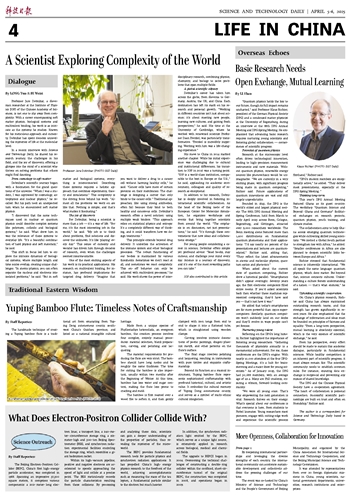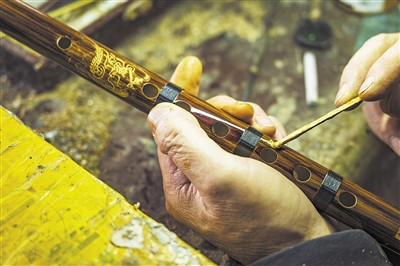
 |
| A craftsman applies gold powder on a Yuping bamboo flute. (PHOTO: VCG) |
The handmade technique of creating a Yuping bamboo flute is a traditional art form emanating from Yuping Dong autonomous county, southwest China's Guizhou province, and listed as a national intangible cultural heritage.
Made from a unique species of Phyllostachys heteroclada, an evergreen bamboo, the creation process involves four complex, entirely manual procedures: material selection, blank preparation, carving, and polishing and lacquering.
The material requirements for producing the flute are very strict. The bamboo should have long nodes and be roughly the same thickness. The time for cutting the bamboo is also important, usually within two months after the Beginning of Winter. At this time, bamboo has less water and sugar content, making the flute less prone to cracking and mold.
The bamboo is first roasted over a wood fire to soften it, and then gently clamped with iron tongs from end to end to shape it into a flattened tube, which is straightened using wooden clamps.
Carving involves intricate decorations of poetic paintings, dragon-phoenix motifs, and other patterns on the flute's surface.
The final stage involves polishing and lacquering, resulting in instruments with pure timbre and exquisite craftsmanship.
Beyond its function as a musical instrument, Yuping bamboo flute represents sophisticated craftsmanship with profound historical, cultural, and artistic value. It embodies the cultural memory of Yuping Dong autonomous county, and serves as a symbol of multi-ethnic cultural integration.







